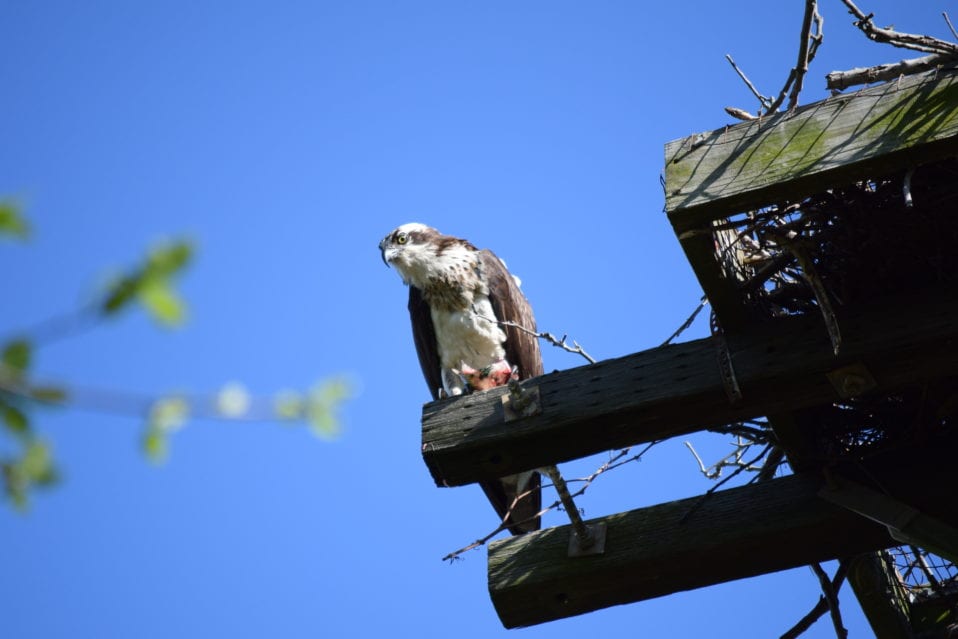Outside my window is an empty Osprey nest. Occupied for three years. The nest’s tenants are at this very moment winging their way north, after five months in the Amazon Basin. I’m speculating, here, neither bird is fitted with a transmitter, but many birds from this region spend the northern winter in the fish rich confines of South America.
My point? In a few short weeks, in fact probably two, the nest will welcome back the adult pair for another breeding season. Of course, this prediction presupposes that both adults survive their cross-gulf passage. Millions of birds do not survive. They hit energy sapping headwinds and are engulfed by the Gulf of Mexico. But enough birds survive to make this strategy self perpetuating. Genetic programming is written by survivors and passed on to the next generation.
Since the birds in this pair have made the crossing at least twice, smart money says they’ll succeed again. If only one bird makes it back, the survivor will recruit a new mate. Happily, the Osprey population on New Jersey’s Delaware Bayshore is healthy enough to support a surplus of adults.
The reasons for this are several fold. First, our region has been an Osprey stronghold since at least the early 1800s, when Alexander Wilson first studied the birds of the region. The Father of American Ornithology even has an story about eggnog being made for a patron of Beesly’s Tavern whose foundation was an Osprey egg.
Another reason for today’s wealth of Osprey has to do with the active management campaign waged by state and private agencies. Today, there are hundreds of artificial nest platforms, like the one outside my window along the Maurice River and adjacent marshes.
But the main reason we enjoy such a wealth of Osprey is because the Delaware Bay ecosystem is healthy and thriving. Osprey run on fish. The nest productivity of the region which exceeds two young per nest is a direct result of fish stock in the bay. Menhaden numbers are high and Menhaden is just about the perfect size for Osprey.
Osprey return with the fish and their return has been viewed by baymen for two centuries as a sure sign that a new fishing season is upon us. And a new breeding season, too.
Pete Dunne












